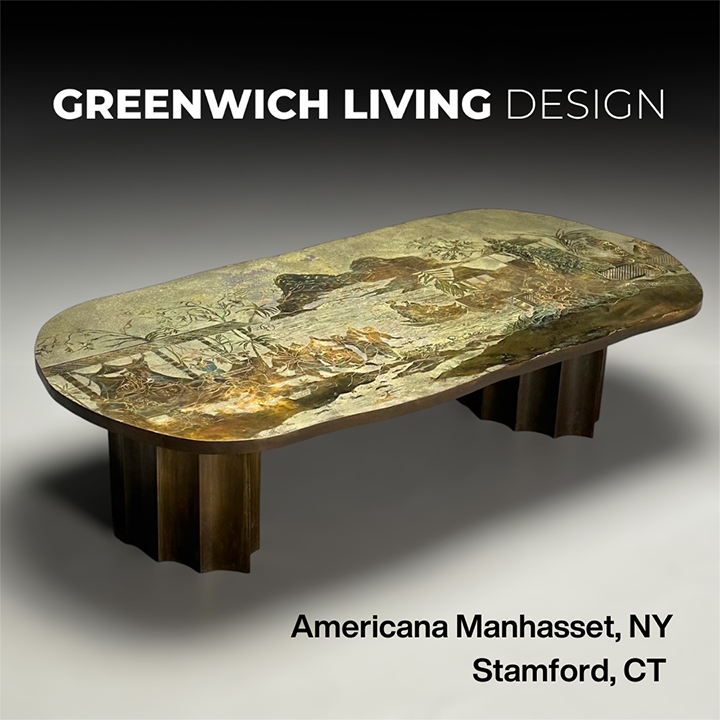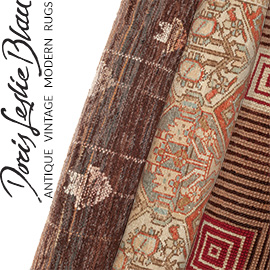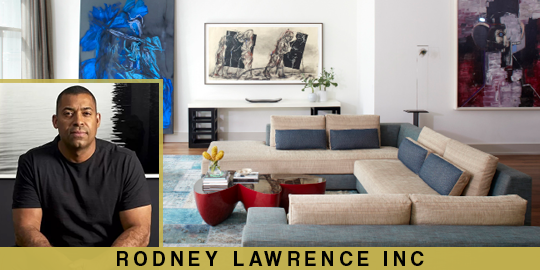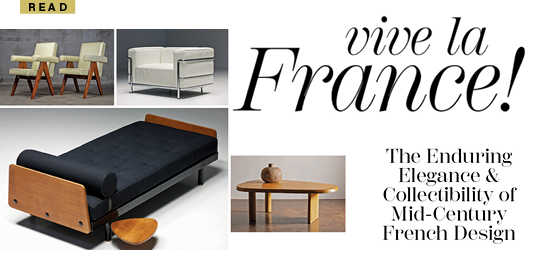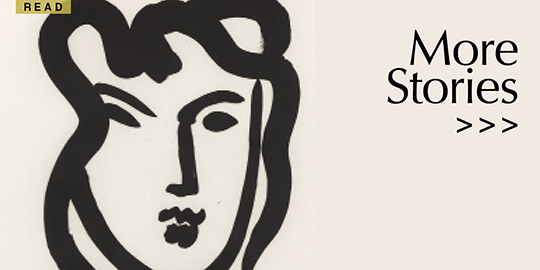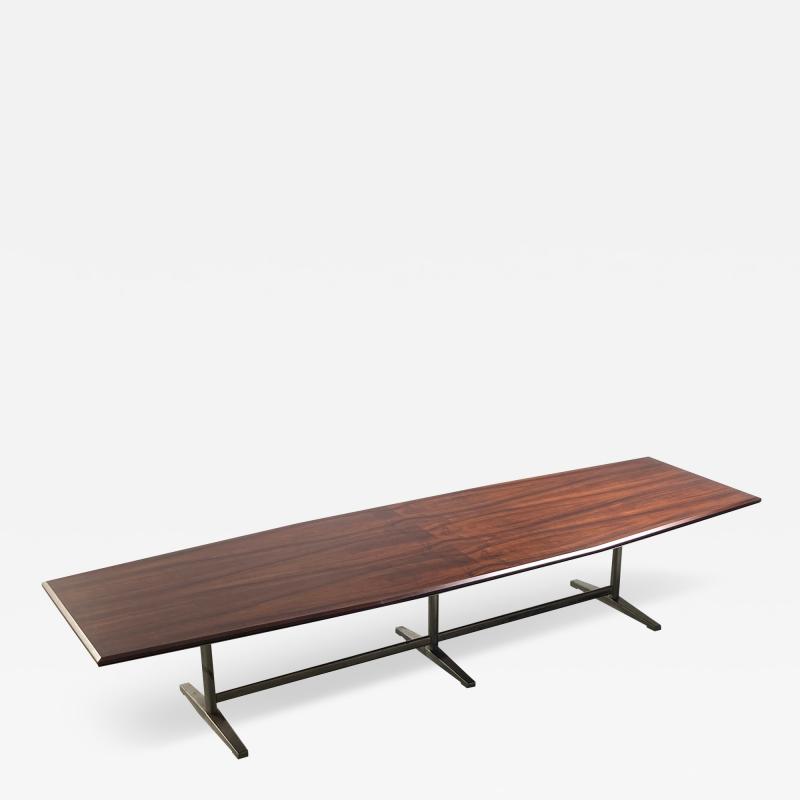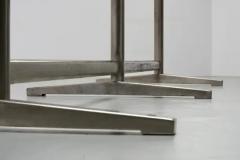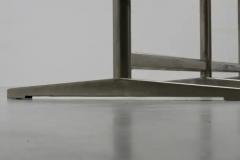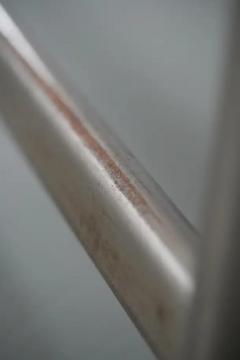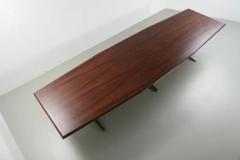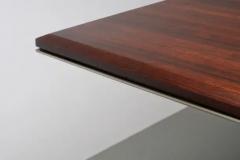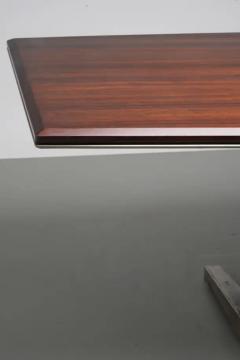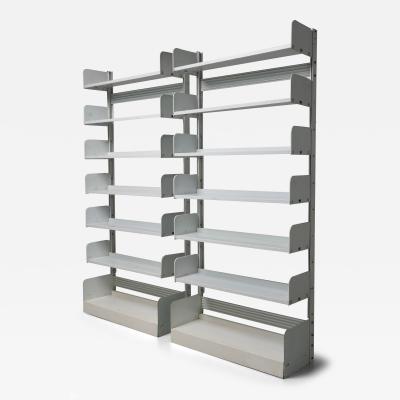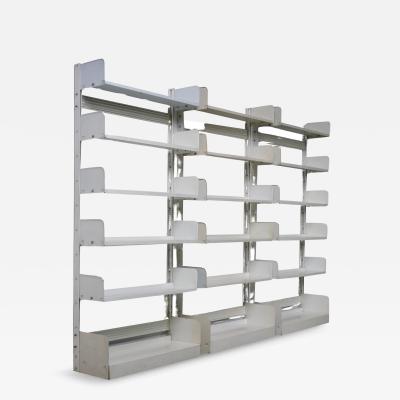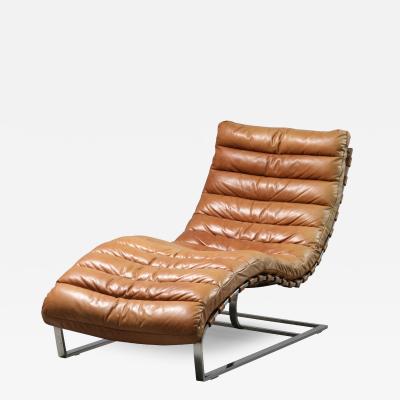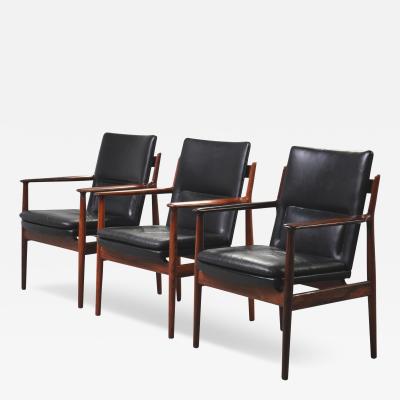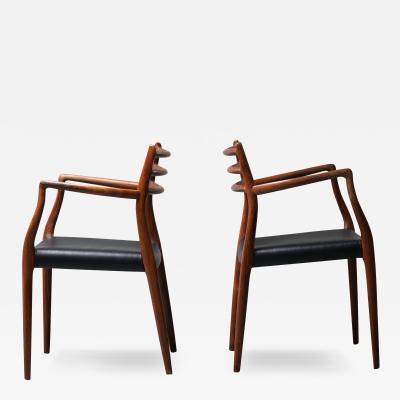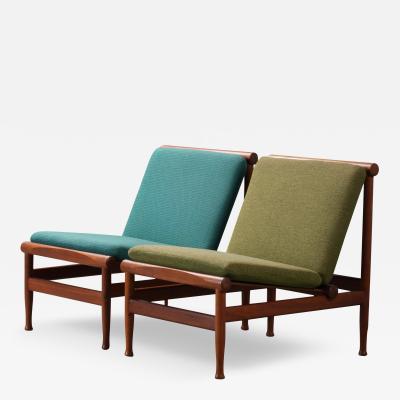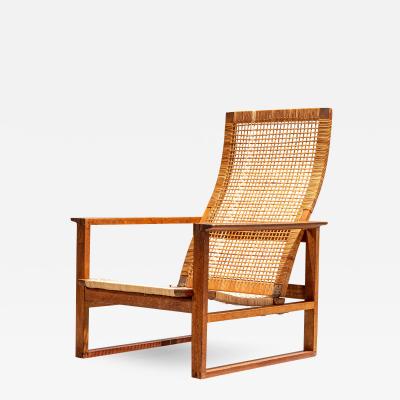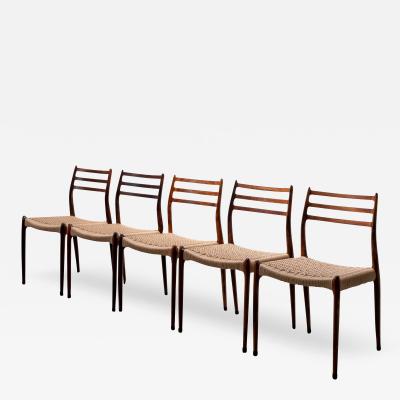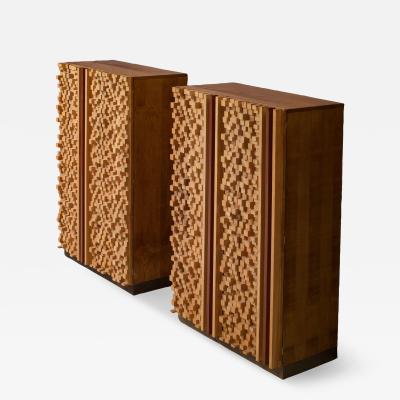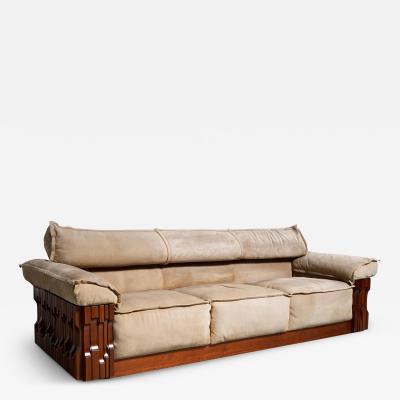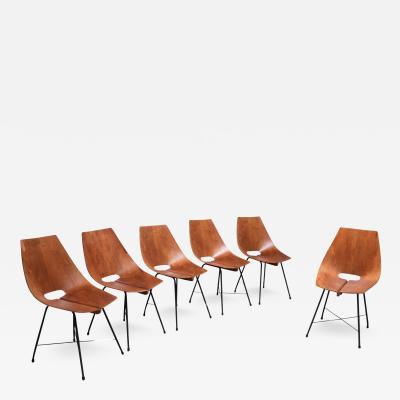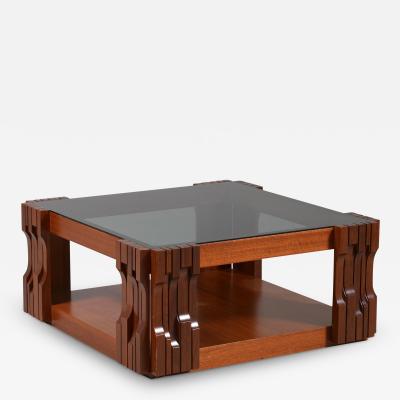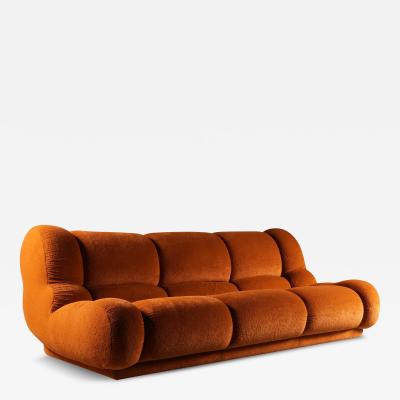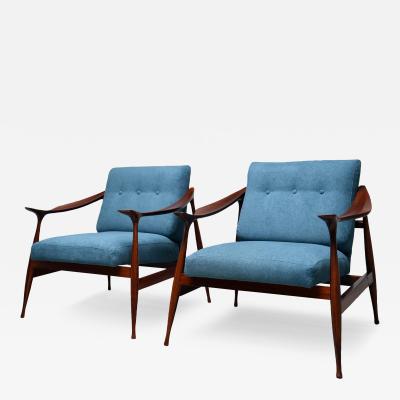An extraordinarily large dining- or conference table in rosewood with fantastic provenance. We are looking at an important 'Pirellone' direction table by Gio Ponti and Alberto Roselli for Rima Padova especially designed for the masterpiece that Gio Ponti created in Milan, the first skyscraper of Italy: The Pirelli building (1969). The table comes straight out of the Pirelli headquarters from the executive meeting rooms. Not so many were made of these magnificent large tables because they were only meant for the board meeting-rooms and conference-rooms in the Pirelli Tower, so we are very proud to have one of these luxurious and limited pieces available now in the gallery. This table can give your meeting- or conference room the allure and grandeur that your business ánd your clients deserve. Of course these tables are very well suitable for large dining parties too.
There is a lot of information on the internet on the Pirelli building and the interior, both designed by Gio Ponti. Especially the Pirelli Foundation has some interesting articles and photos on their website and this specific conference tables can be witnessed as well. The table comes together with a very nice book about the building. You can clearly see the resemblance in the design of the outer structure and the lines in the design of the table.
From the same Pirelli Foundation:
“One interesting feature in the history of the tower is that of its interior design. The work of Gio Ponti, who designed it “in relation to and in continuity with the architecture”, as we read in issue 71 of Edilizia Moderna devoted to the Pirelli headquarters in September 1960, the design gave a stylistic identity to all the premises and to all the furnishings, from the walls and floors, all clad in Pirelli rubber and linoleum, to the doors, through to the lifts, clocks, lamps and other lighting equipment, in the “democratic” belief that all the “inhabitants” of the building, from the company chairman to the office clerks, should live in the same spaces.
Color, which was particularly important for Ponti – as he himself says in “Everything in the World Must Be Brightly Colored”, an article he wrote for Pirelli magazine in 1952 – was used as a “means of correcting the monotony and anonymity of the spaces” in the doors, which were clad in red linoleum, and on the floors, in yellow and black linoleum. Gio Ponti and Alberto Rosselli also chose the furniture: the desks were those Ponti had designed in 1955 for the Rima company, with metal frames and wooden or linoleum tops”
What also makes these tables very special is that the materials that were used: Rosewood, the most luxurious and highly protected of all hardwoods ánd metal. For that time the use of metal was very progressive because most furniture was manufactured in wood till then, but now Gio Ponti used metal instead to hold for the heavy top. Together with the industrial revolutions this was a logical step but Gio Ponti was the first one to integrate metal in furniture like this, creating the possibility to keep its shape very minimal, because metal is strong, and to bring the focus on the beautiful slim and slender top. The rosewood is very much present with its dark flames, still very distinct because these tables have hardly any discoloration by sunlight. They are still very nicely dark with chromed metal legs and a metal ridge around the table that protects the table against the chairs banging in to them. Both of the tops are in very very good condition!
The large meeting room tables recalled the ground plan of the “rice grain” building. The upholstered seats, on the other hand, were made by Arflex, a company set up in 1950 to an idea by the Pirelli engineer Carlo Barassi, which produced furniture upholstered with Pirelli foam rubber, bringing chairs, armchairs, sofas, and beds onto the market. They were designed by the greatest names in 1950s architecture and design, building on the experience acquired in the 1930s, when several Rationalist architects, including Ponti himself, had carried out the first experiments in furniture upholstered with latex foam rubber, which had been exhibited in the furniture show of the VI Triennale di Milano in 1936. “Hall” armchairs, designed by Roberto Menghi in 1958, were chosen for the waiting rooms in the tower.
The Pirellone was ready to embark on its new life."
Publications; Ponti, Fornaroli, Rosselli, Valtolina, Dell'Orto, Gli interni, in "Edilizia Moderna", nr. 71, december 1960, p. 84.




